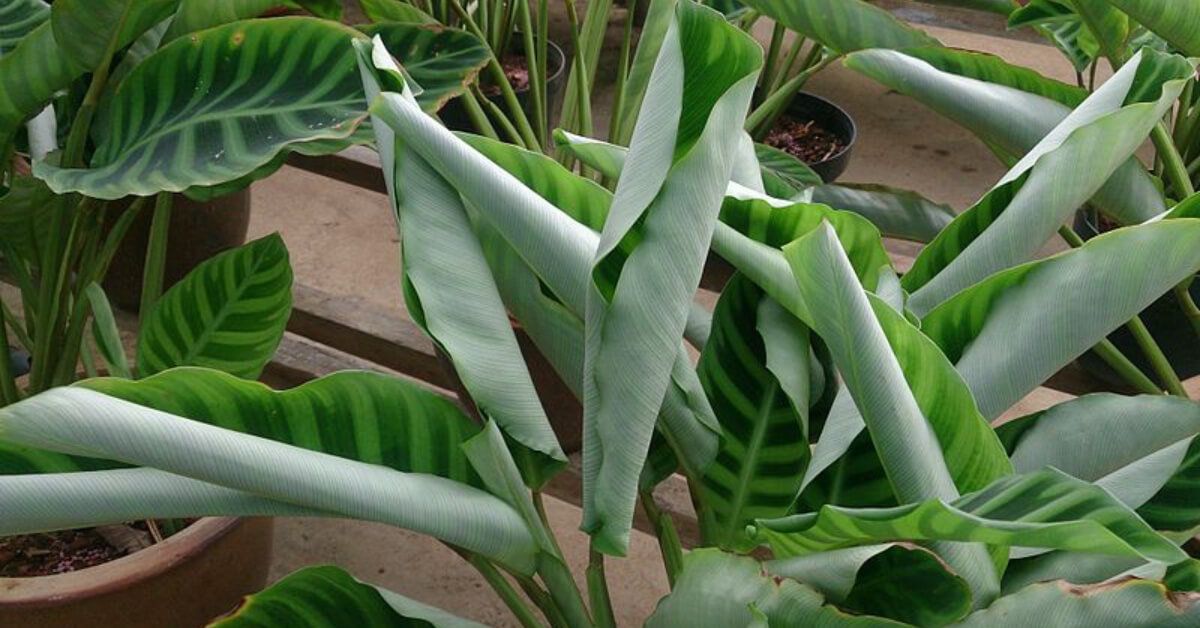Calatheas, also known as prayer plants, are beloved for their vibrant, patterned leaves that can add a touch of elegance to any indoor space. However, these plants are known for their sensitivity to changes in their environment. When they begin to exhibit curled leaves, it can be a sign that something is wrong. Identifying the root cause and taking appropriate action is essential to restoring the plant’s health and ensuring it thrives.
Understanding the Causes of Curled Leaves in Calatheas
Curling leaves on a Calathea plant can be attributed to several factors, including improper watering, inadequate humidity, or exposure to extreme temperature fluctuations. Understanding why this happens is crucial to correcting the issue and preventing further damage.
1. Low Humidity Levels
Calatheas are tropical plants that thrive in humid environments. They are highly sensitive to low humidity, which can cause the leaves to curl in an attempt to conserve moisture. This issue is particularly common in homes with dry air, especially during the colder months when indoor heating systems can significantly lower humidity levels.
Solution: To fix this, it is important to increase the humidity around the plant. Using a humidifier, placing the plant on a pebble tray, or grouping plants together can help maintain a moisture-rich environment. Regular misting may also be beneficial, though it should be done carefully to avoid mold buildup.
2. Improper Watering Practices
Both overwatering and underwatering can cause stress to a Calathea, leading to curling leaves. Overwatering results in waterlogged soil, depriving the roots of oxygen and encouraging root rot. On the other hand, underwatering causes dehydration, which leads to dry, curled leaves as the plant struggles to retain moisture.
Solution: To prevent curling leaves caused by improper watering, it is essential to maintain a consistent watering schedule. Check the soil’s moisture level before watering; if the top 1-2 inches of soil are dry, it’s time to water. Ensure the pot has proper drainage to prevent excess water from accumulating. Adjust watering frequency based on the plant’s environment and season.
3. Temperature Fluctuations
Calatheas are sensitive to temperature changes and drafts. Exposure to hot air from heaters, cold air from open windows, or sudden temperature shifts can cause the leaves to curl as the plant struggles to adjust to these extremes.
Solution: Place the Calathea in a location with stable temperatures, away from heating vents or air conditioning units. Ideally, the plant should be kept in a room where the temperature remains between 65-75°F (18-24°C) year-round. Avoid placing the plant near drafty windows or areas where it is exposed to frequent temperature changes.
4. Insufficient Light
While Calatheas do well in low to medium light, placing them in a spot with very little light can also lead to curled leaves. When a plant is not receiving enough light, it may exhibit signs of stress, including leaf curling as it tries to reach for more light.
Solution: Move the Calathea to a brighter spot, but avoid direct sunlight, as it can scorch the leaves. Calatheas thrive in indirect light, so placing them near a window with sheer curtains or in a room with filtered light can provide the ideal conditions.
5. Pests and Diseases
Although Calatheas are relatively pest-resistant, they are still susceptible to infestations of spider mites, aphids, or mealybugs, which can cause damage to the leaves. Pests may cause leaf curling as they feed on the plant’s tissues, leading to weakened, stressed foliage.
Solution: Inspect the plant regularly for pests, particularly on the undersides of the leaves and along the stem. If pests are present, remove them manually or use an insecticidal soap to treat the plant. Regular cleaning and maintaining proper plant care can help prevent pest infestations.
6. Nutrient Deficiencies
A lack of essential nutrients, such as nitrogen, potassium, or magnesium, can lead to curled, yellowing leaves on Calatheas. These nutrient deficiencies may result from poor soil, lack of fertilization, or root damage, which prevents the plant from absorbing the nutrients it needs.
Solution: Ensure that the plant is being fed with a balanced, water-soluble fertilizer during its active growing season (spring and summer). Use a fertilizer formulated for houseplants, and avoid over-fertilizing, as this can cause root burn and stress. Additionally, consider repotting the plant if it has outgrown its pot or if the soil is depleted of nutrients.
7. Transplant Shock
If the Calathea has been recently repotted, it may experience transplant shock, which can manifest as curled or wilting leaves. This happens when the plant is stressed by the change in its environment, including disturbed roots, changes in soil, or new light conditions.
Solution: Give the plant time to adjust to its new environment. Avoid overwatering and provide stable conditions with consistent light and humidity. It may take several weeks for the plant to recover and show new growth.
How to Prevent Calathea Leaf Curling in the Future
Preventing leaf curling in Calatheas is about maintaining stable, suitable conditions for growth. Regular monitoring of the plant’s environment, proper watering techniques, and careful attention to light and humidity are essential steps in promoting healthy growth.
- Ensure the plant is placed in a location with stable temperatures and indirect sunlight.
- Regularly check the humidity level and use a humidifier if needed to provide moisture.
- Avoid overwatering or underwatering by keeping the soil slightly moist but not soggy.
- Use a balanced fertilizer during the growing season to support healthy growth.
- Regularly inspect the plant for signs of pests or disease.
By paying attention to the unique needs of a Calathea and making small adjustments to its care routine, the plant can thrive without the stress of curling leaves.

